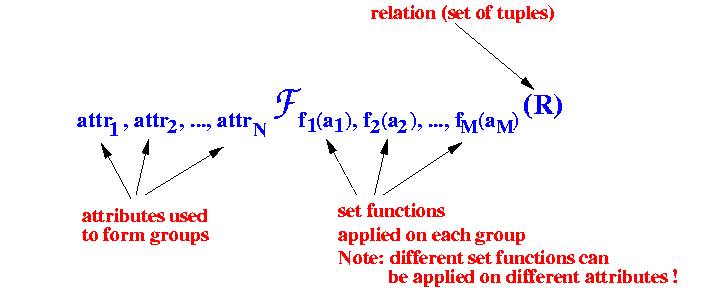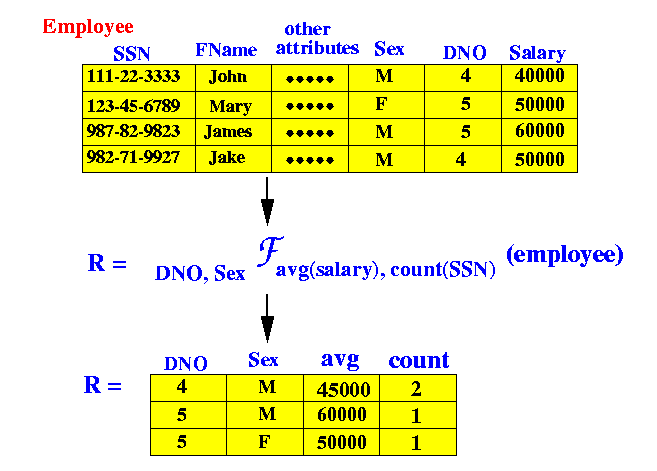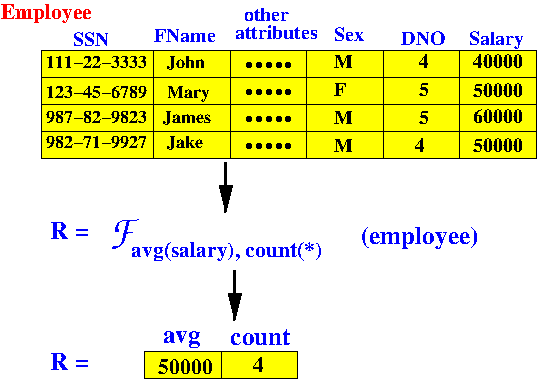- The operation where:
- a set of tuples (i.e., a relation)
is first
separated into different groups
based on one or more attributes
- and then applying one or more set functions on each group
is denoted as follows:

- a set of tuples (i.e., a relation)
is first
separated into different groups
based on one or more attributes
- The
output
of the set function is a
relation
containing the following attributes:

- The content
(i.e., tuples )
of the relation consists of:
- all
distinct values
of the
grouping attributes
attr1,
attr2, ...,
attrN.
- and the function values f1(a1), f2(a2), ..., fM(aM) on the corresponding group.
- all
distinct values
of the
grouping attributes
attr1,
attr2, ...,
attrN.
- Example:

- Notice that the output is indeed a set of tuples -
i.e., a relation.
- Notice that there is NO tuple with
attribute values (DNO=4, Sex='F')
when this group (set) is empty !!!
- The attribute name for the function values is named after the function name.
- Notice that the output is indeed a set of tuples -
i.e., a relation.
- Often -- for clarity reasons -- one or more
attribute
in the result relation
are
renamed
- The attribute
in the result relation
are given new names
by
sepcifying explicit names
for the attributes when the
result is computed
- Example:

- Recall:
if we do not specify
any grouping attributes:
ℱsetfunc(attr)(R) ^ | no grouping attributes specifiedThen:
- ℱsetfunc(attr)(R) will compute the set function "setfunc" on tuples in the entire set R
(we have seen this when we discussed the set functions)
- Example:
- Find the
average salary
of all employees
and the total number of employees
in the company:

- We will next do some examples to help you develop skills to formulate queries in relation algebra - these skills will help you formulate queries in SQL.